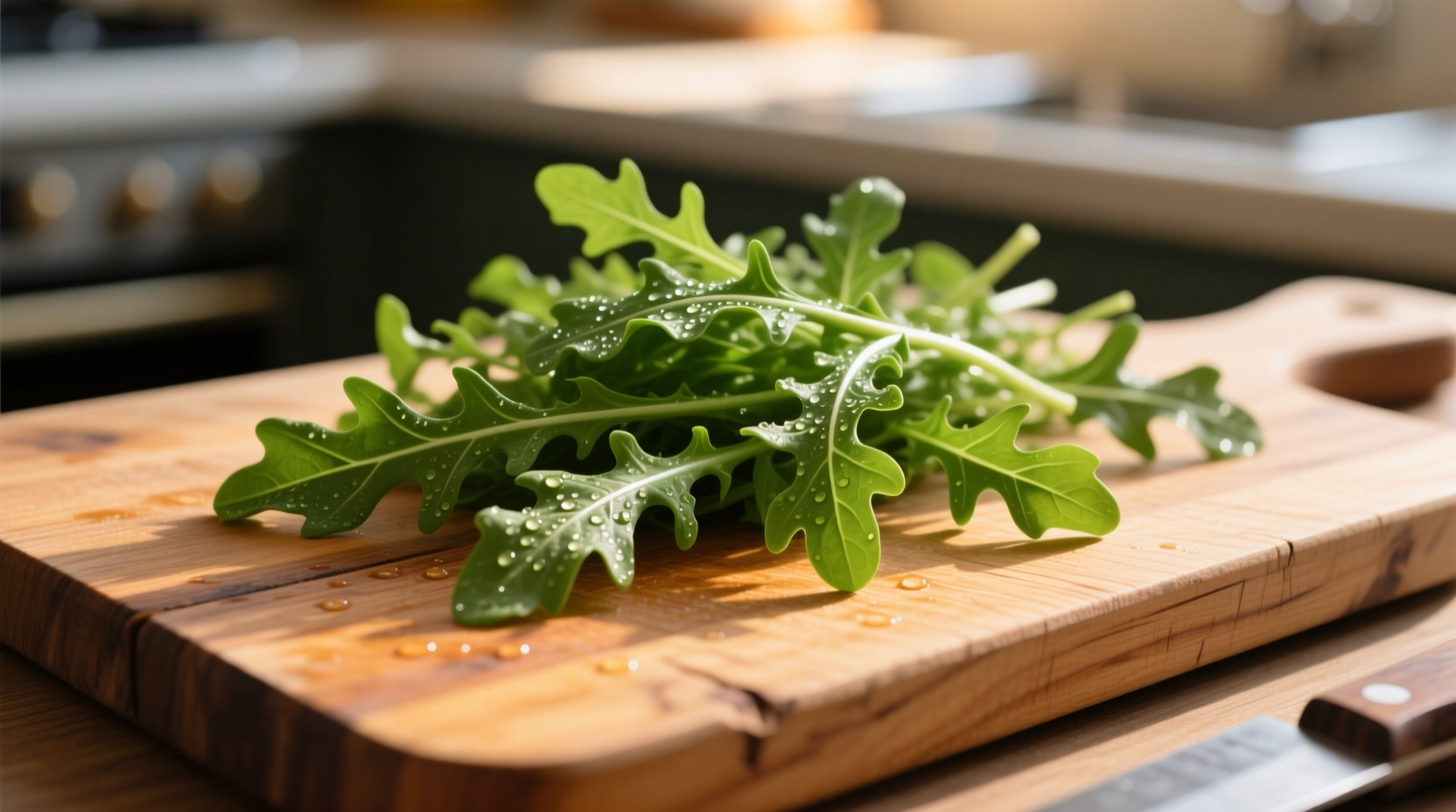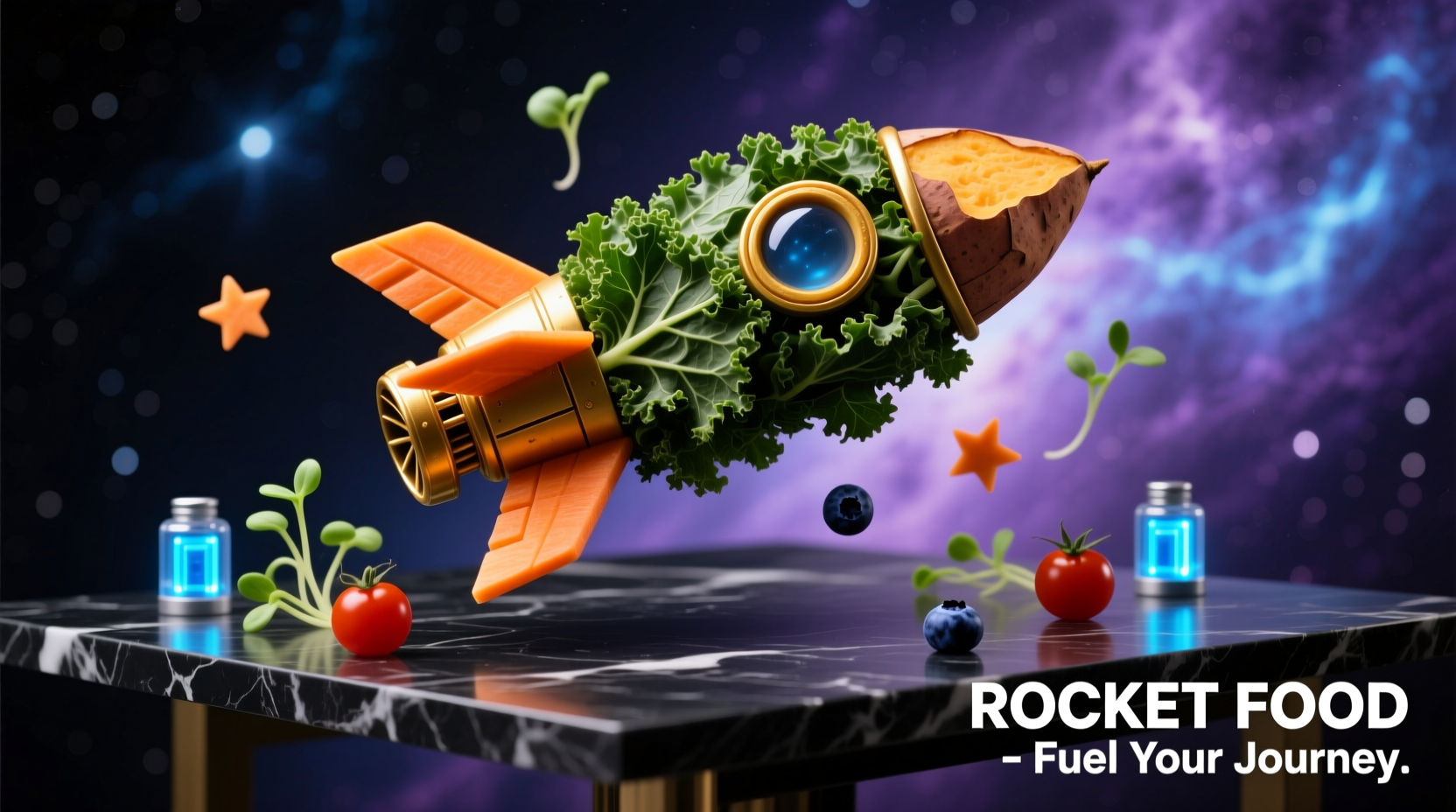Rocket (Eruca vesicaria), commonly called arugula in the United States, isn't actually food for rockets—it's one of the most vibrant and flavorful leafy greens in the culinary world. This fast-growing annual plant has been cherished since Roman times for its distinctive peppery taste and impressive nutritional profile. Whether you're encountering it on a menu or at your local farmers' market, understanding what rocket food is and how to use it can transform your cooking experience.
What Exactly Is Rocket?
Rocket, or rucola as it's known in Italy, is a cruciferous vegetable that shares botanical kinship with broccoli, kale, and cabbage. Unlike its heartier relatives, rocket features delicate, deeply lobed leaves that deliver an immediate peppery sensation followed by subtle nutty undertones. The younger leaves offer a milder flavor perfect for delicate salads, while mature leaves develop a more pronounced spicy character ideal for robust dishes.
The confusion between "rocket" and "arugula" stems from regional naming differences. In the UK, Australia, and most Commonwealth countries, it's universally called rocket. In the United States, the Italian term "arugula" predominates, though food professionals increasingly use both terms interchangeably. Despite the name variation, they refer to the same plant species with minor cultivar differences.
| Green Type | Flavor Profile | Best Culinary Uses | Nutrition Highlights |
|---|---|---|---|
| Rocket/Arugula | Peppery, slightly bitter | Salads, pizza topping, pesto | High in vitamin K, folate, calcium |
| Spinach | Mild, earthy | Cooked dishes, smoothies | High in iron, magnesium |
| Kale | Bitter, robust | Soups, sautéed dishes | High in vitamins A, C, K |
| Radicchio | Bitter, slightly sweet | Grilled, roasted | Antioxidants, fiber |
The Flavor Journey of Rocket Leaves
What sets rocket apart from other salad greens is its dynamic flavor evolution. When you first taste rocket, you experience an immediate peppery sensation caused by glucosinolates—compounds also found in mustard and horseradish. This initial kick gives way to subtle nutty undertones and a refreshing bitterness that cleanses the palate. The intensity varies significantly based on growing conditions, with plants exposed to more sunlight developing stronger flavors.
Understanding this flavor progression helps you incorporate rocket effectively in your cooking. For delicate applications like topping crostini or garnishing soups, opt for baby rocket leaves which offer milder heat. When creating robust pesto or blending with stronger cheeses like pecorino, mature rocket leaves provide the necessary flavor punch to stand up to bold ingredients.

Historical Timeline of Rocket Consumption
Rocket's culinary journey spans millennia, evolving from ancient medicinal plant to modern superfood:
- Ancient Rome (1st century CE): Romans considered rocket an aphrodisiac and used it in love potions, as documented in historical texts like De Agri Cultura by Cato the Elder
- Middle Ages: Monastic gardens across Europe cultivated rocket for both culinary and medicinal purposes, with references in herbals like Hildegard von Bingen's Physica
- 16th century: Rocket appeared in English herbals like John Gerard's Herball, where it was praised for "provoking lust"
- 20th century: Italian immigrants introduced rocket to America, where it initially struggled to gain popularity
- 1990s-present: Rocket experienced a culinary renaissance as chefs embraced its distinctive flavor, leading to widespread availability in supermarkets
According to research from the University of California's Agriculture and Natural Resources department, rocket's resurgence aligns with growing consumer interest in diverse, nutrient-dense greens beyond traditional lettuce varieties.
Practical Applications in Your Kitchen
Knowing what rocket food is matters less than understanding how to use it effectively. This versatile green shines in multiple applications beyond basic salads:
Perfect Pairings
Rocket's peppery nature creates magical flavor combinations when paired with complementary ingredients:
- Cheese partners: The saltiness of Parmesan or Pecorino Romano balances rocket's heat
- Fruit matches: Sliced pears, figs, or citrus segments provide sweetness that counters bitterness
- Nut companions: Walnuts or pine nuts add texture while their oils mellow the peppery bite
- Dressing dynamics: Lemon-based vinaigrettes enhance rather than mask rocket's natural flavor
When Not to Cook Rocket
Unlike hardier greens, rocket's delicate structure means it wilts almost instantly when exposed to heat. This characteristic creates important context boundaries for its use:
- Raw applications only: Add rocket as a finishing green to pizzas or pastas after cooking
- Quick wilting: If incorporating into warm dishes, toss immediately before serving
- Substitution guidelines: When a recipe specifically calls for rocket's peppery kick, avoid substituting milder greens like butter lettuce
According to culinary research from the Culinary Institute of America, rocket's glucosinolates begin breaking down at temperatures above 140°F (60°C), significantly reducing both its distinctive flavor and nutritional benefits.
Nutritional Powerhouse
Beyond its culinary appeal, rocket delivers impressive health benefits. A single 2-ounce (56g) serving provides:
- 106% of your daily vitamin K requirement (essential for blood clotting and bone health)
- 24% of daily vitamin A (supports vision and immune function)
- 14% of daily folate (crucial for cell division and DNA synthesis)
- Significant calcium and potassium content
The USDA FoodData Central database confirms rocket contains higher concentrations of certain phytochemicals compared to other salad greens, particularly erucin and sulforaphane, which research suggests may offer protective effects against certain chronic diseases.
Selecting and Storing Rocket Properly
Maximize your rocket experience by following these professional selection and storage techniques:
At the Market
- Look for crisp, vibrant green leaves without yellowing or wilting
- Smell the bunch—fresh rocket should have a clean, peppery aroma
- Choose smaller leaves for milder flavor, larger for more intense heat
Prolonging Freshness
- Store in a perforated plastic bag with a slightly damp paper towel
- Keep in the high-humidity crisper drawer of your refrigerator
- Consume within 3-5 days for optimal flavor and texture
- Never wash until ready to use to prevent premature wilting
When properly stored, rocket maintains its distinctive flavor profile and crisp texture. Chefs at leading culinary institutions recommend using rocket within 72 hours of purchase for the most vibrant culinary experience.











 浙公网安备
33010002000092号
浙公网安备
33010002000092号 浙B2-20120091-4
浙B2-20120091-4